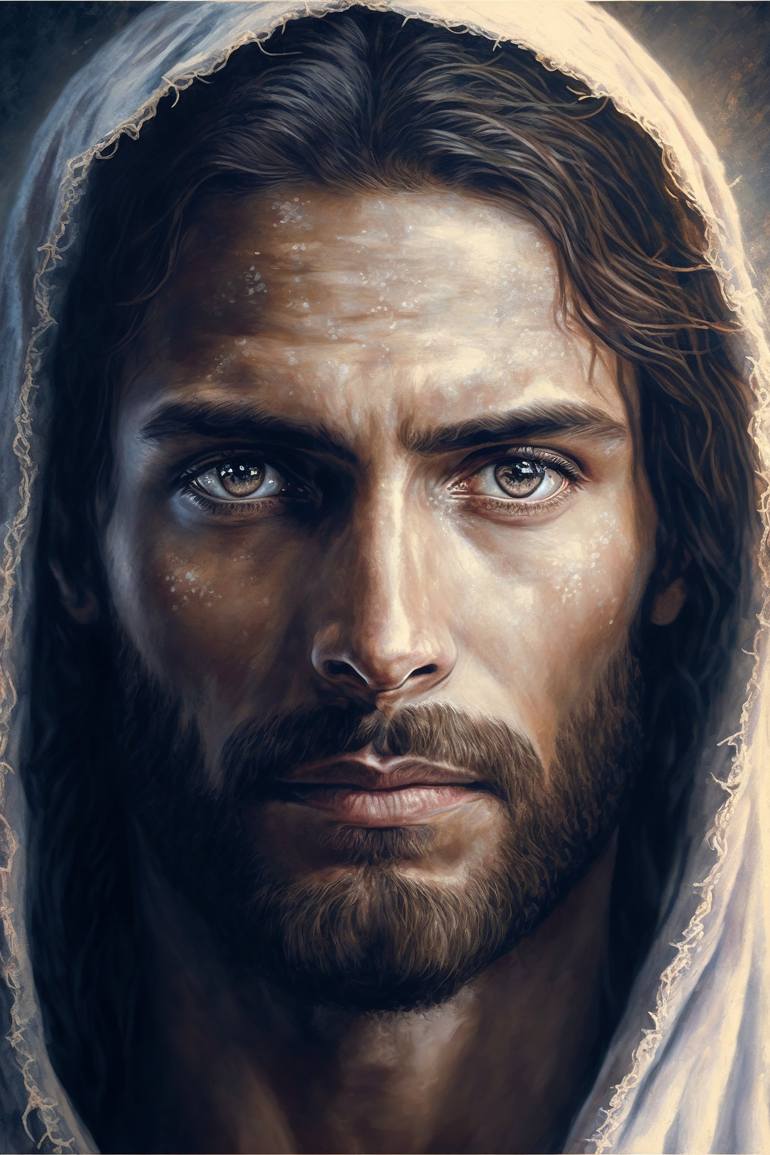WHY JESUS CHRIST NEVER LAUGHS? (PART 3)
****Part 4: Jesus Christ and the Western Civilization
Laughter has played an important role in Western civilization, and the depiction of Jesus as never laughing has had a significant impact on the way laughter is perceived in this culture. The absence of laughter in the portrayal of Jesus has been interpreted in various ways throughout history.
In the Middle Ages, the Church played a dominant role in society, and laughter was often seen as a threat to its authority. This led to the suppression of laughter in religious contexts, and the portrayal of Jesus as a stern and serious figure. The fear of laughter was also linked to the fear of the devil, who was often depicted as a laughing and mocking figure.
The Renaissance marked a shift in attitudes towards laughter, and the depiction of Jesus became more nuanced during this period. Artists such as Leonardo da Vinci and Michelangelo portrayed Jesus with a range of emotions, including joy and tenderness. However, the image of Jesus as a serious and contemplative figure remained dominant.
In the modern era, the portrayal of Jesus has become more diverse, and some artists have attempted to capture his humanity and sense of humor. However, the image of Jesus as a solemn and serious figure still persists in popular culture, and his absence of laughter continues to influence the way laughter is perceived in Western society.
One of the factors that have contributed to the perception of Jesus as never laughing is the emphasis on his divinity. In Christian theology, Jesus is seen as the son of God and the savior of humanity, and this has led to a focus on his spiritual rather than his human qualities. The image of Jesus as a divine being who is above earthly concerns has made it difficult to imagine him engaging in activities such as laughter and humor.
Another factor that has influenced the perception of Jesus as never laughing is the emphasis on his suffering and sacrifice. The crucifixion of Jesus is a central event in Christian theology, and the portrayal of Jesus as a figure who willingly endured immense suffering has contributed to his image as a serious and solemn figure. The focus on Jesus's sacrifice has also made it difficult to imagine him engaging in frivolous activities such as laughter and humor.
In addition to these theological factors, the depiction of Jesus as never laughing has also been shaped by cultural and historical forces. The suppression of laughter in religious contexts during the Middle Ages, as well as the fear of laughter as a threat to authority, have contributed to the portrayal of Jesus as a serious and contemplative figure. The influence of the Church on Western culture has also played a role in shaping the perception of Jesus as never laughing.
Oswald Spengler's views on the decline of Western civilization can also shed light to the relationship between Jesus Christ and Western civilization. In the context of Spengler, the portrayal of Jesus Christ as a figure who never laughs is emblematic of the declining state of the culture. Spengler believed that civilizations go through a natural cycle of growth and decline, and that Western civilization had reached its decline phase. In this phase, he argued, the culture becomes increasingly rigid and formalized, and loses touch with its vital, creative energy.
The depiction of Jesus as a serious and solemn figure, devoid of laughter and joy, is consistent with Spengler's view of a culture in decline. It represents a loss of spontaneity and creative expression, and a turn towards formality and rigidity. This emphasis on seriousness and solemnity is reflective of a culture that has lost touch with its vital life force and is preoccupied with the trappings of power and authority.
In this sense, the portrayal of Jesus as never laughing can be seen as a symptom of the larger cultural malaise that Spengler believed was afflicting Western civilization. It represents a turning away from the spontaneous, joyful expression of life and a turn towards a more formal and constrained way of being. This, in turn, contributes to a sense of cultural stagnation and decline, as the culture becomes increasingly closed off to new ideas and experiences.
However, it is important to note that the absence of laughter in the portrayal of Jesus is not universal. Some Christian traditions, such as the Eastern Orthodox Church, have depicted Jesus as a figure who engages in laughter and humor. Furthermore, the depiction of Jesus as never laughing has been challenged by some modern artists and theologians who have attempted to capture his humanity and sense of humor.
In conclusion, the portrayal of Jesus as a figure who never laughs has had a significant impact on the perception of laughter in Western society. The theological emphasis on Jesus's divinity and suffering, as well as cultural and historical factors such as the fear of laughter as a threat to authority, have contributed to this perception. However, it is important to recognize that the absence of laughter in the portrayal of Jesus is not universal, and that there are alternative depictions of Jesus that capture his humanity and sense of humor.

Comments
Post a Comment